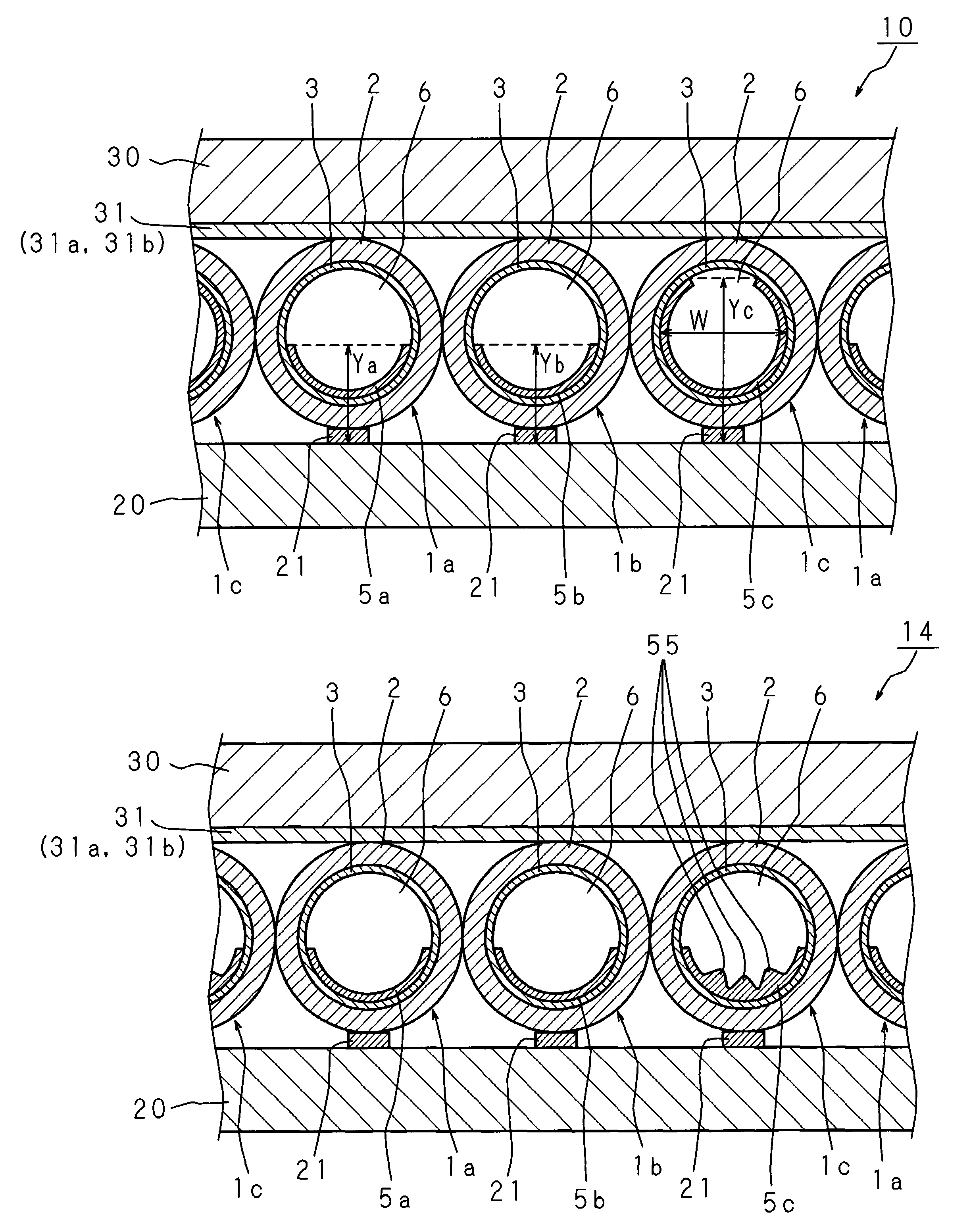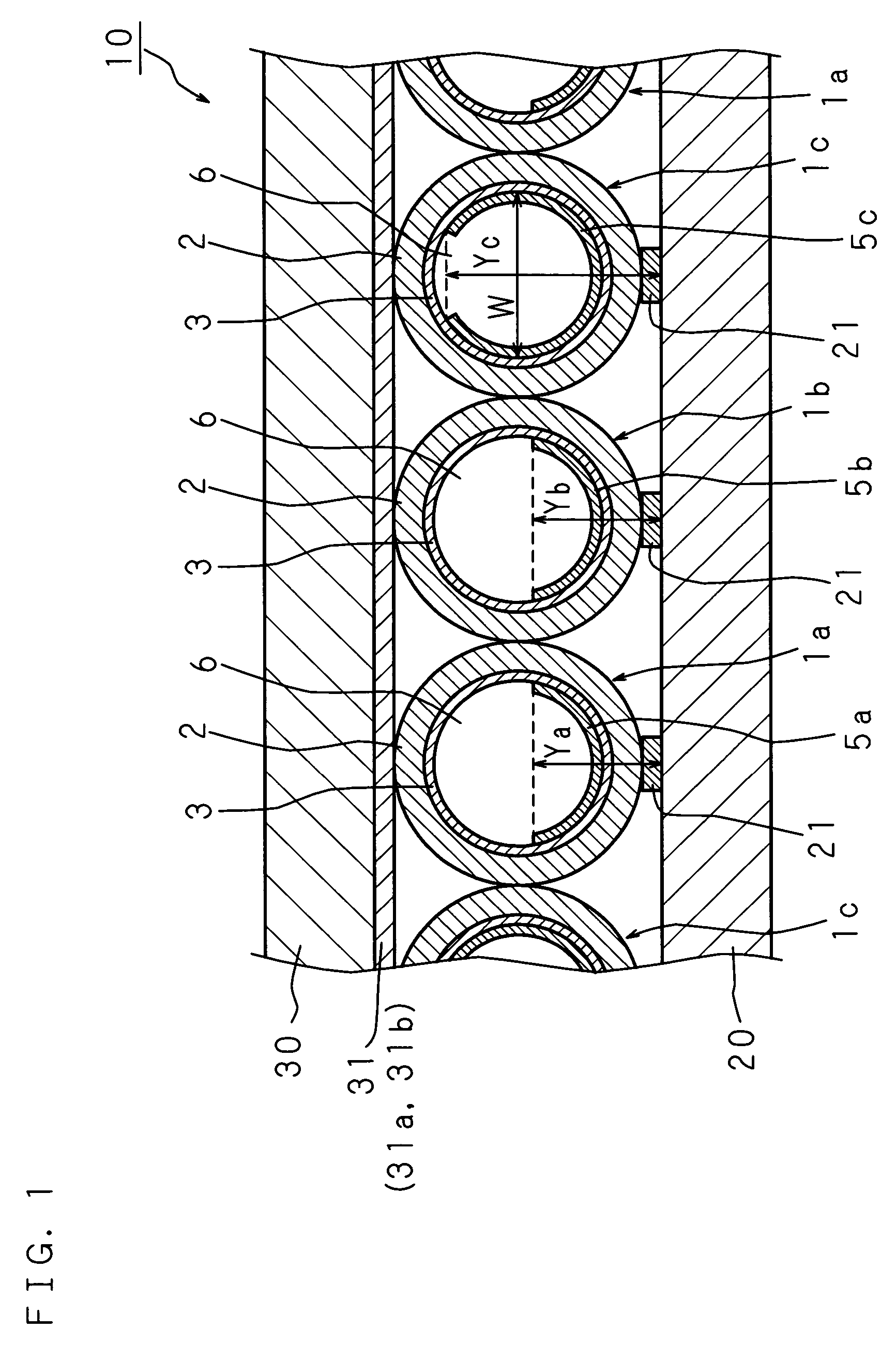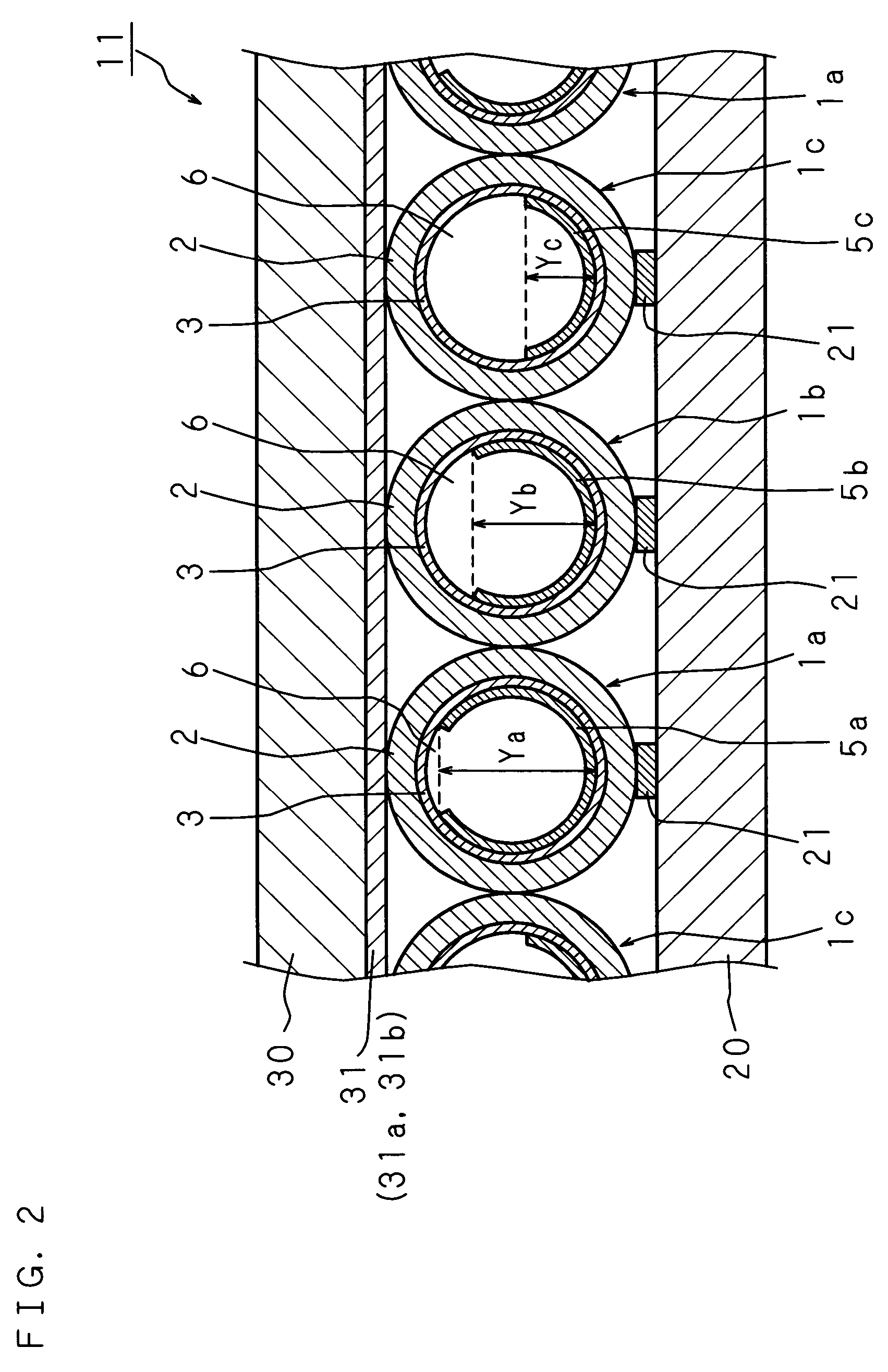Display device with varying phosphor structure
a phosphor structure and display device technology, applied in the field of display devices, can solve the problems of low excitation efficiency, insufficient luminance, low color temperature, etc., and achieve the effects of less variation in emission luminance of each gas discharge tube, high throughput, and variable phosphor layer capacity
- Summary
- Abstract
- Description
- Claims
- Application Information
AI Technical Summary
Benefits of technology
Problems solved by technology
Method used
Image
Examples
embodiment 1
[0043]FIG. 1 is a structural cross sectional view showing one example of display device according to Embodiment 1 of the present invention. A display device 10 according to Embodiment 1 comprises a large number of red gas discharge tubes 1a, green gas discharge tubes 1b, and blue gas discharge tubes 1c (which may hereinafter be referred to as gas discharge tubes 1 if there is no need to distinguish them from each other), which are regularly arranged in a direction orthogonal to the axial direction thereof and sandwiched between a rear support body (substrate) 20 and a front support body (substrate) 30.
[0044]As the rear support body 20 and front support body 30, glass substrates are illustrated, but the rear support boy 20 and front support body 30 may also be made of flexible sheets such as polycarbonate films and PET (polyethylene terephthalate) films having light transmitting properties. In this case, it may be possible to deform the flexible sheets along the outer shape of gas di...
embodiment 2
[0053]FIG. 3 is a structural cross sectional view showing one example of display device according to Embodiment 2 of the present invention. In a display device 12 according to Embodiment 2 of the present invention, the thickness Tc of the blue phosphor layer 5c is thicker than the thicknesses Ta and Tb of the red and green phosphor layers 5a, 5b, and establishes the relationship Tc>Ta=Tb. The widths of the phosphor layers 5a, 5b and 5c, which are the intervals in a radial direction of the respective red gas discharge tube 1a, green gas discharge tube 1c and blue gas discharge tube 1c, are substantially the same irrespective of the emission colors of the phosphor layers. Since other structures are the same as those in Embodiment 1, the corresponding parts are designated with the same codes, and the detailed explanation thereof is omitted.
[0054]Thus, by varying the thicknesses of the phosphor layers, the ultraviolet reflectance is increased. Consequently, the luminescence intensity of...
embodiment 3
[0057]FIG. 5 is a structural cross sectional view showing one example of display device according to Embodiment 3 of the present invention. In a display device 14 according to Embodiment 3 of the present invention, each of the red and green phosphor layers 5a and 5b has an axial cross section in the shape of a crescent moon. On the other hand, the axial cross section of the blue phosphor layer 5c has a shape composed of a plurality of projections and depressions arranged alternately like saw teeth. The widths of the phosphor layers 5a, 5b and 5c are substantially the same irrespective of the emission colors of the phosphor layers. Since other structures are the same as those in Embodiment 1, the corresponding parts are designated with the same codes, and the detailed explanation thereof is omitted.
[0058]Thus, the projecting sections 55 of the blue phosphor layer 5c are closer to the front support body 30, and the area irradiated with ultraviolet radiation becomes larger due to the p...
PUM
 Login to View More
Login to View More Abstract
Description
Claims
Application Information
 Login to View More
Login to View More - R&D
- Intellectual Property
- Life Sciences
- Materials
- Tech Scout
- Unparalleled Data Quality
- Higher Quality Content
- 60% Fewer Hallucinations
Browse by: Latest US Patents, China's latest patents, Technical Efficacy Thesaurus, Application Domain, Technology Topic, Popular Technical Reports.
© 2025 PatSnap. All rights reserved.Legal|Privacy policy|Modern Slavery Act Transparency Statement|Sitemap|About US| Contact US: help@patsnap.com



